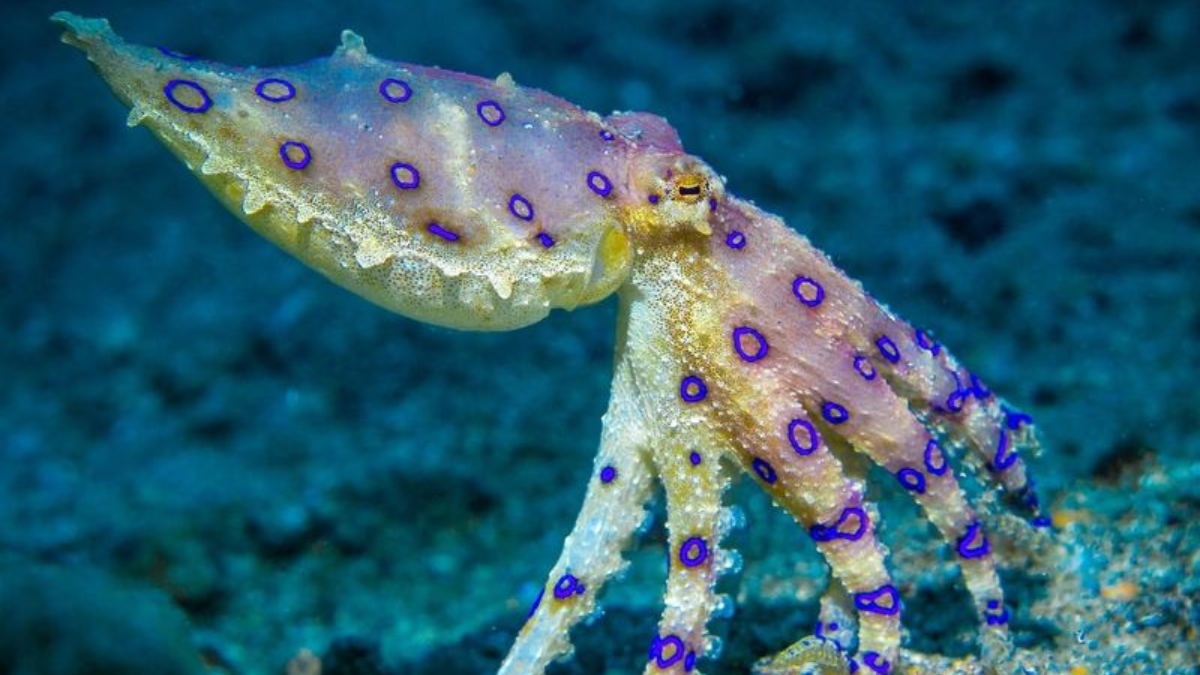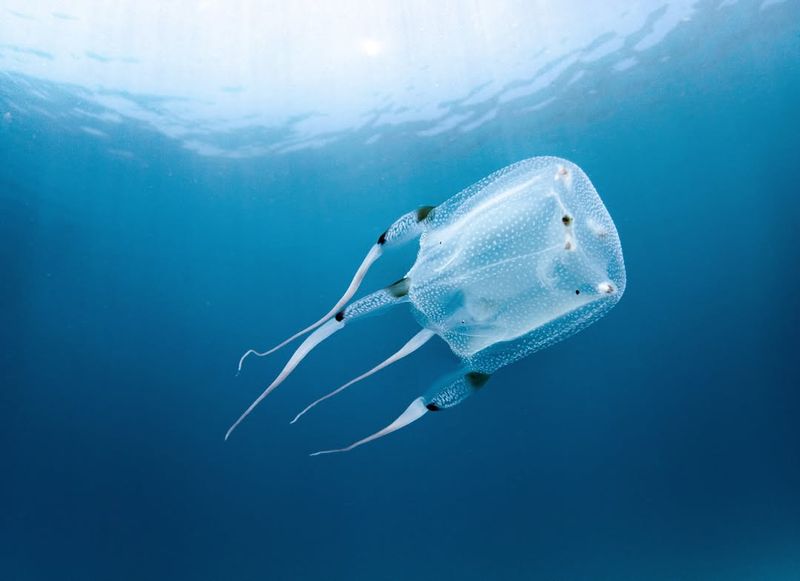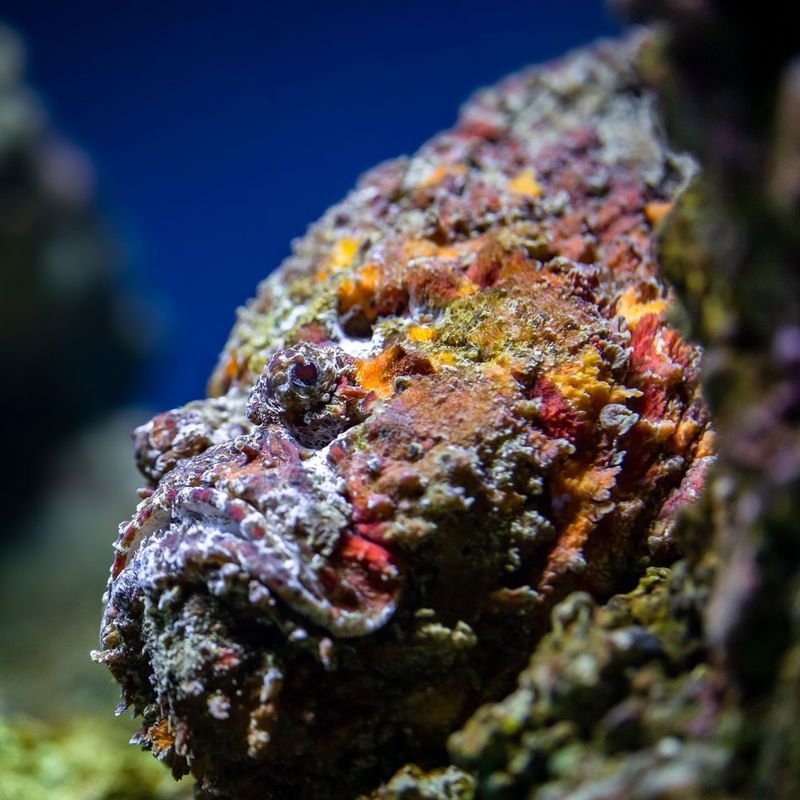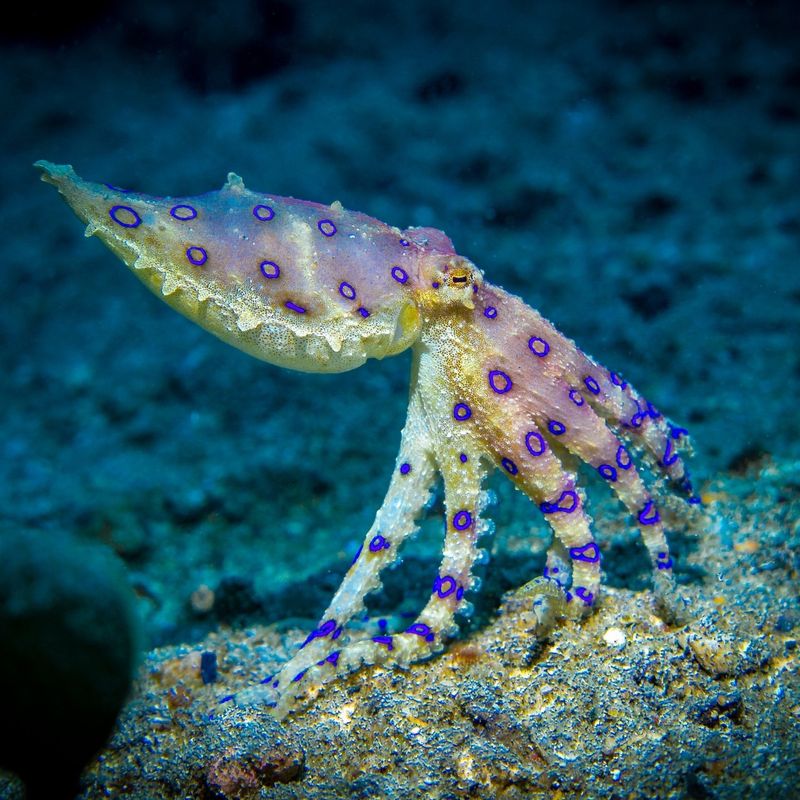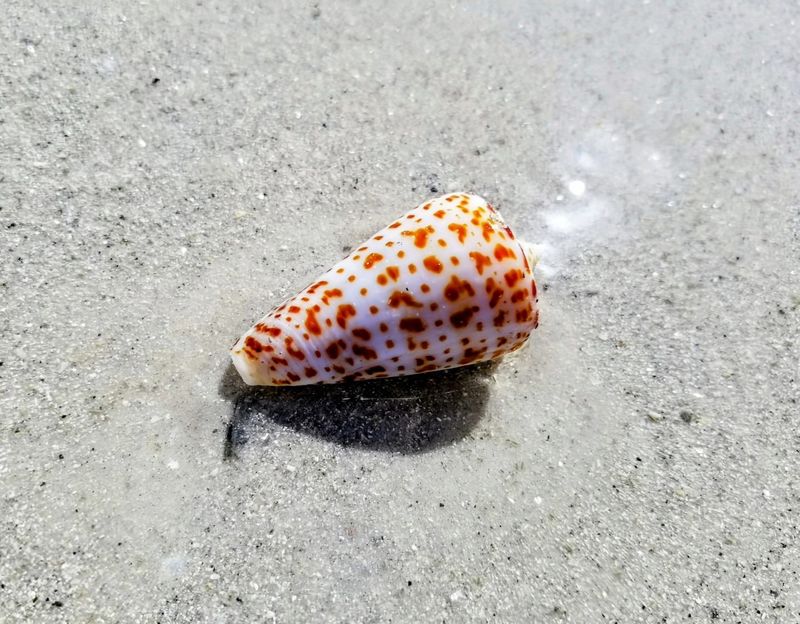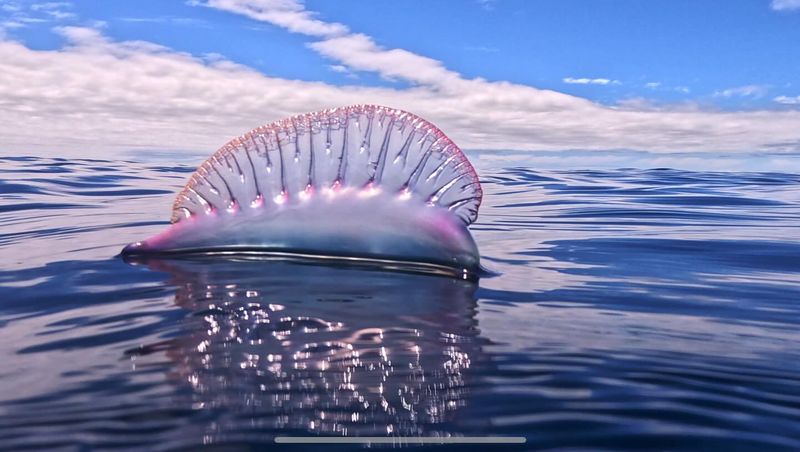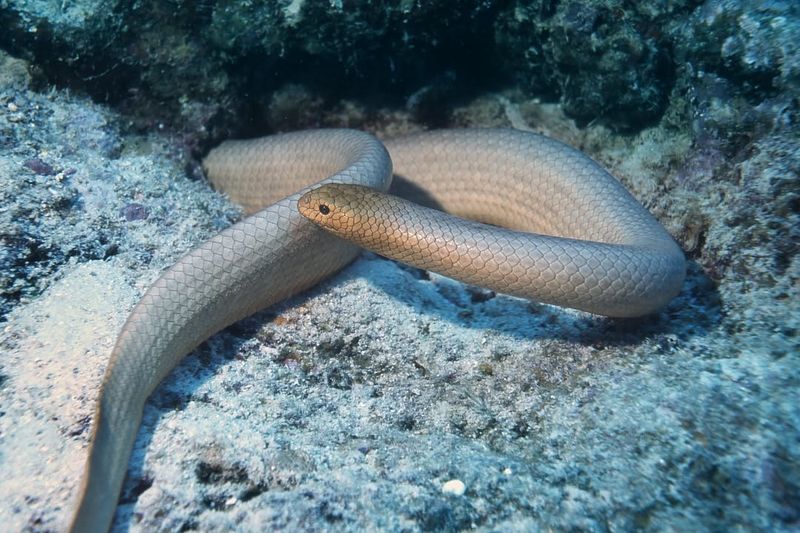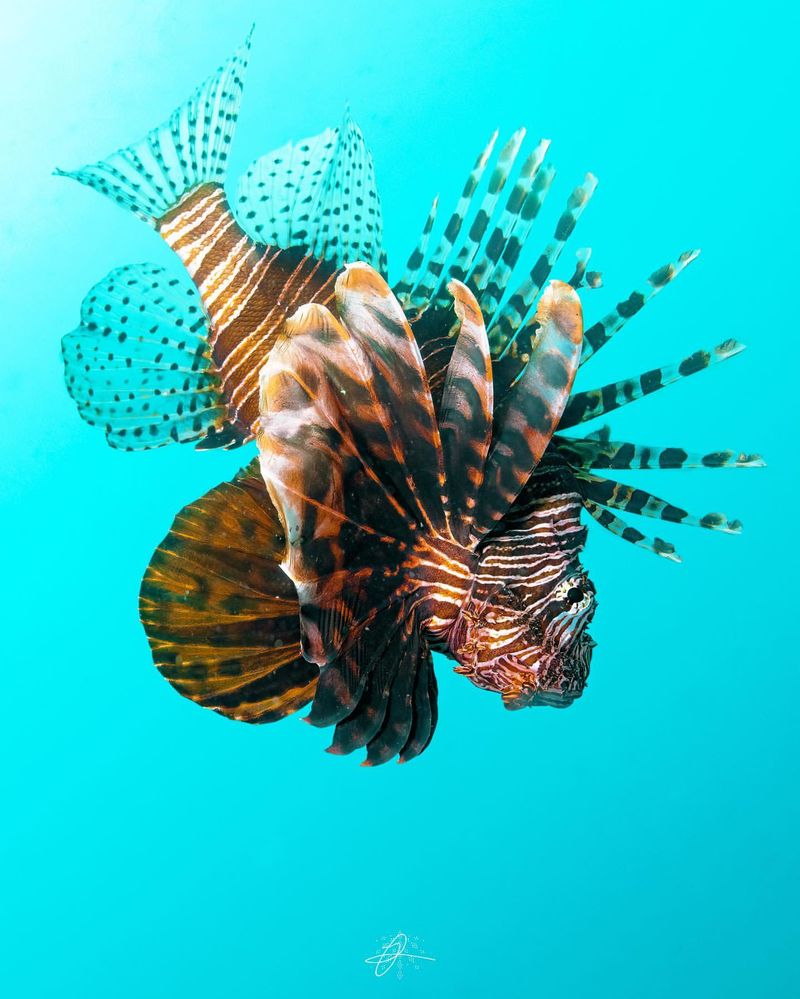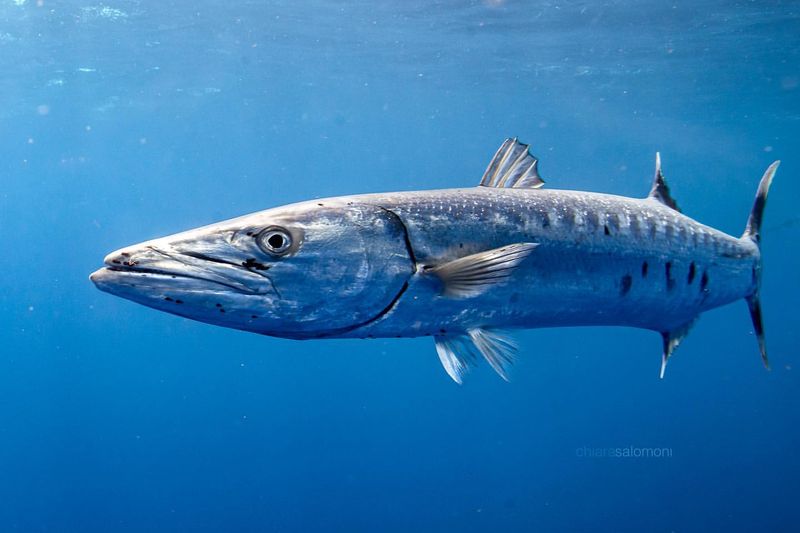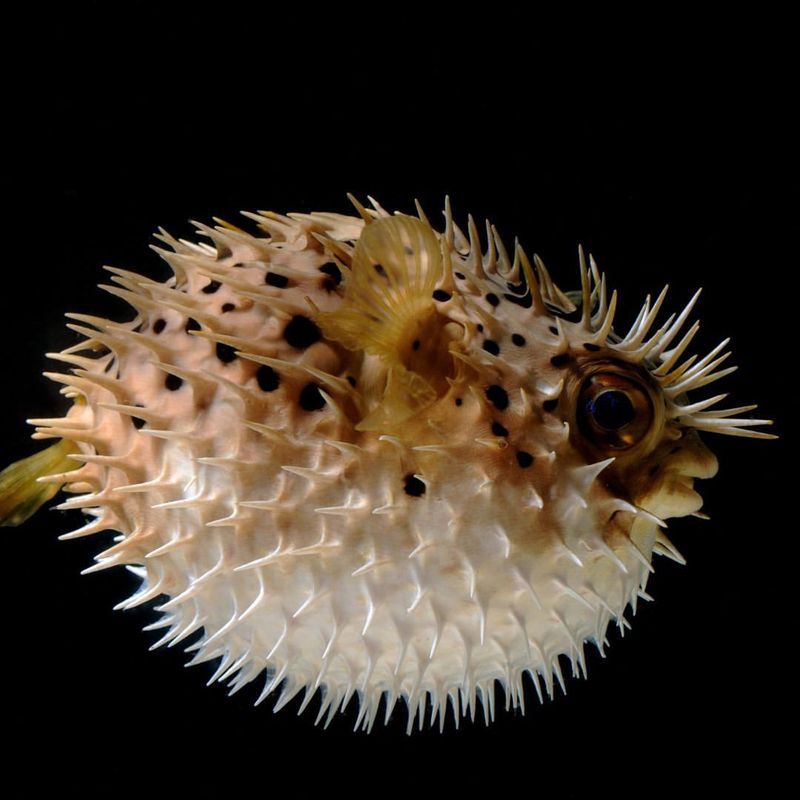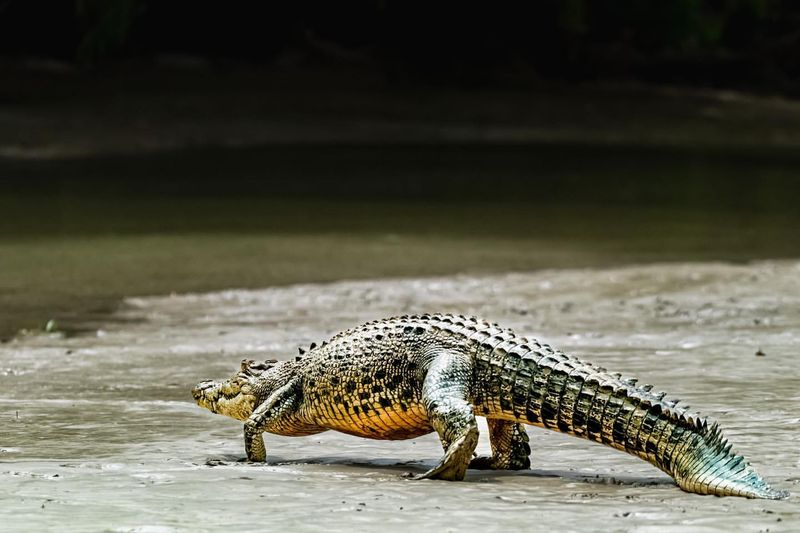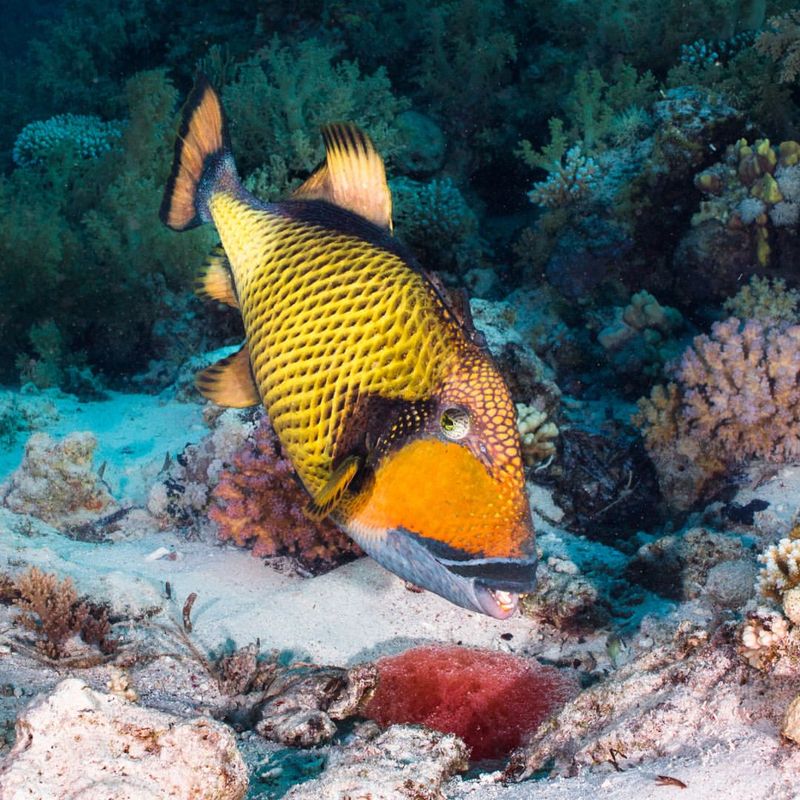📖 Table of Content:
Sharks get a bad rap. Thanks to Hollywood thrillers and sensational headlines, they’re often painted as the ultimate underwater predators.
But what if we told you there are creatures lurking in the deep (and sometimes in the shallows) that are far more dangerous? From tiny assassins armed with venom to masters of disguise with lethal tricks, the ocean is full of creatures that could make even the fiercest shark seem like a misunderstood puppy.
In this article, we’re diving into the world of 12 ocean dwellers that prove danger doesn’t always come with a dorsal fin. Some are small but mighty, while others are massive and stealthy.
Either way, these aquatic adversaries might just make you rethink what to fear next time you dip your toes in the sea.
12. Box Jellyfish
Floating like a ghost in tropical waters, the box jellyfish may look harmless, but it’s one of the deadliest creatures in the ocean. Its tentacles are armed with thousands of nematocysts, capable of delivering venom so potent it can cause heart failure within minutes.
To make matters worse, their stings are agonizingly painful and can leave scars. Found primarily in the waters of Australia and Southeast Asia, this jellyfish is not something you’d want to encounter on your beach day.
These creatures are almost transparent, making them hard to spot, and their venom can also cause difficulty breathing and loss of consciousness. Immediate medical attention is crucial, but even with treatment, the experience can leave lasting effects, both physically and psychologically.
11. Stonefish
The stonefish is the ultimate master of disguise, blending seamlessly into its surroundings on the ocean floor. Step on one of these spiny creatures, though, and you’ll quickly realize why it’s considered the most venomous fish in the world.
Its spines inject a venom that can cause excruciating pain, tissue damage, and even death if untreated.
The worst part? You might not even see it until it’s too late. Stonefish venom works by causing swelling, intense pain, and even paralysis, making it incredibly dangerous to anyone unfortunate enough to encounter it.
Their ability to survive out of water for up to 24 hours adds to the risk, as they might still pose a threat when washed up on beaches.
10. Blue-Ringed Octopus
Don’t let its tiny size and mesmerizing blue rings fool you—this octopus is a powerhouse of venom.
Found in tidal pools and coral reefs across the Pacific and Indian Oceans, the blue-ringed octopus carries enough toxin to kill 26 humans in minutes. Its venom contains tetrodotoxin, which paralyzes muscles and can lead to respiratory failure.
And the kicker? There’s no known antidote. These octopuses often go unnoticed due to their small size, only about the size of a golf ball, but their bite delivers a dose of venom that can cause numbness, nausea, and eventual asphyxiation if help doesn’t arrive fast.
Despite their danger, they’re generally non-aggressive and will only attack if provoked.
9. Cone Snail
With its beautifully patterned shell, the cone snail looks like a collector’s dream, but this marine mollusk is anything but innocent. It uses a harpoon-like tooth to inject venom into its prey, and its toxin is strong enough to paralyze or kill humans.
Nicknamed “Cigarette Snails,” legend has it their venom gives you only enough time to smoke a cigarette before succumbing to its effects. Definitely not a souvenir you want to pick up. Cone snails are slow-moving but have a highly efficient venom delivery system.
Symptoms of their sting include intense pain, blurred vision, paralysis, and even respiratory failure. Interestingly, their venom has been studied for its potential use in pain relief medication.
8. Portuguese Man o’ War
Often mistaken for a jellyfish, the Portuguese Man o’ War is actually a siphonophore, a colonial organism made up of specialized polyps. Its venomous tentacles can deliver a painful sting that may cause welts, fever, and in rare cases, respiratory distress.
Floating gracefully on the ocean surface, it is moved by winds and currents, often washing up on beaches. Its tentacles can extend over 30 feet, making accidental encounters common.
It’s important to avoid touching even dead specimens, as their stingers remain active. Swimmers should steer clear of areas where these creatures are spotted, heeding local advisories to stay safe from their unseen threat.
7. Sea Snake
Sea snakes may look like their terrestrial relatives, but they pack an even more venomous punch. Found primarily in the warm waters of the Pacific and Indian Oceans, their venom is highly toxic, and a single bite can kill multiple humans.
Luckily, they’re shy and rarely aggressive, but it’s best not to test their patience. Many species of sea snakes are known for their potent neurotoxic venom, which can cause muscle pain, spasms, and eventually paralysis.
Despite their deadly reputation, they often avoid humans, and most bites occur when they are accidentally stepped on or handled. Protective footwear and cautious behavior can significantly reduce the risk of encounters.
6. Lionfish
With its vibrant stripes and flowing fins, the lionfish is undeniably striking, but its beauty hides a dangerous secret. This invasive species has venomous spines that can cause extreme pain, nausea, and breathing difficulties.
Native to the Indo-Pacific, lionfish have spread to other regions, wreaking havoc on ecosystems and proving that their danger goes beyond just their sting. Their venom can cause swelling and an intense burning sensation that lasts for hours or even days.
The lionfish’s rapid reproduction and lack of natural predators in non-native waters have led to significant ecological issues, making them a threat to both marine life and humans.
5. Great Barracuda
Known for its speed and sharp teeth, the great barracuda is a predator you wouldn’t want to cross paths with. These fish are curious by nature and have been known to mistake shiny objects, like jewelry, for prey.
While attacks on humans are rare, their bites can cause severe injuries, and their meat can carry ciguatera toxin, a harmful substance that causes food poisoning. Barracudas are also known for their sudden bursts of speed, which allow them to ambush prey with razor-sharp precision.
Their territorial nature makes them potentially aggressive, especially when provoked, so it’s best to admire them from a distance.
4. Electric Eel
Despite its name, the electric eel isn’t an eel at all but a knifefish. Found in freshwater environments in South America, this creature can deliver electric shocks of up to 600 volts—enough to stun prey or deter predators.
While not typically lethal to humans, repeated shocks can cause respiratory or heart failure, especially in water where escape is difficult. Electric eels use their shock abilities not only for hunting but also for navigation and communication.
In shallow waters, their electric bursts can be strong enough to knock a person off their feet, making them a formidable force in their habitat.
3. Pufferfish
The pufferfish may look adorable as it inflates into a spiky ball, but it’s one of the most toxic creatures in the ocean. Its skin and internal organs contain tetrodotoxin, a substance 1,200 times more poisonous than cyanide.
In Japan, specially trained chefs prepare pufferfish, or fugu, as a delicacy, but one wrong cut can turn a meal into a deadly gamble. Symptoms of poisoning include dizziness, numbness, and eventual paralysis, often leading to respiratory failure.
Despite its danger, the pufferfish remains a fascinating creature, using its unique ability to inflate as both a defense mechanism and a warning to predators.
2. Saltwater Crocodile
The saltwater crocodile isn’t strictly an ocean creature, but its habitat often overlaps with coastal waters, making it a significant threat. These massive reptiles can grow up to 23 feet long and weigh over a ton.
Known for their explosive speed and crushing bite force, saltwater crocodiles are opportunistic predators that won’t hesitate to attack anything—including humans. They’re known to lurk in estuaries and mangroves, waiting for unsuspecting prey to come close.
Their attacks are swift and often lethal, as their powerful jaws can snap bones and drag victims underwater in seconds.
1. Titan Triggerfish
Don’t let its colorful appearance fool you; the titan triggerfish is highly territorial and aggressive. Found in coral reefs, this fish is notorious for chasing and even biting divers who venture too close to its nest.
Its strong teeth can inflict serious injuries, and its unpredictable behavior makes it a creature to avoid if you’re exploring the reef. They’re particularly defensive during breeding season and are known to attack divers’ fins or even bare skin.
Divers are advised to steer clear of their nests, which can be identified by their conical territories on the reef floor.
